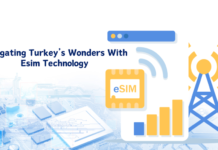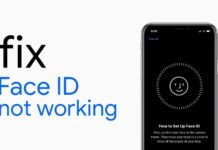Mobile applications play a huge role in many areas and industries today. They help streamline processes, improve customer experience, increase brand awareness and personalize user experience.
But for a business to really benefit from a proprietary mobile application, the stack of the best development technologies should be chosen. The Qt framework is among such technologies. Let’s briefly discuss the pros and cons of qt mobile development and explore the use cases.
What is Qt?
Qt is a framework for developing cross-platform software solutions with a graphical interface (GUI) based on the C++ programming language. This environment is used to develop mobile, desktop and embedded applications. It supports platforms such as Android and iOS, BlackBerry, Windows, Linux, OS X and many more.
Qt was originally designed to create cross-platform desktop applications, and its founders, the Trolltech company, started working on it in 1994. However, when Nokia acquired Trolltech, Qt became interested in mobile application development, and the company began to actively develop Qt, investing heavily, and wanted to make it an ideal tool for creating mobile applications. Today, Qt is among the top cross-platform mobile development frameworks, along with Xamarin, React Native, Ionic, Flutter, and others.
Who uses Qt
- C++ developers who create desktop and mobile applications.
- Developers of software for the Internet of things or for microcomputers.
- Experts in the field of specialized equipment: embedded systems, industrial robots and other complex automation.
Areas of application
Basically, Qt is used to create very fast and high performance applications. These are instant messengers, games, or complex resource-intensive programs. The tool is popular in areas that have increased requirements for software security.
- Manufacturing and transportation industry. Qt and C++ are widely used for writing apps for robots, which are used in manufacturing, transportation of goods and other similar industries. The framework is used when writing software for cars, ships and other means of transport.
- Medtech. The framework is used to create software systems and interfaces for medical equipment.
- IoT. C++ and Qt are used to write logic for smart devices connected to the Internet of Things.
Among mobile apps written in Qt are Autodesk, Spotify, Skype, etc.
Qt advantages for mobile development
QML
One of the best features of Qt is QML, a reactive programming language (sometimes also called a declarative language) that extends JavaScript. It allows you to create amazing apps that save up to 90% of code compared to native development for iOS or Android. With less code and a single code base for iOS, Android, and desktop, your maintenance costs are drastically reduced. You can release updates across platforms faster and have one team to share knowledge.
Architecture
Unlike many other cross-platform solutions, Qt offers an architecture that does not rely on native platform rendering or a web view. It moves all controls and rendering into the application itself. To display elements on the device screen, you only need a native view with a drawing canvas. Instead of a built-in platform renderer, the framework uses custom, application-driven rendering. This allows you to use a single renderer across all supported platforms.
C++ benefits
Because the Qt framework is based on C++, it provides some benefits of this language: features such as polymorphism, inheritance, encapsulation, and classes make applications more robust and allow developers to reuse code; both small mobile applications and complex resource-intensive programs can be developed; you can always get advice from a huge community of developers, which reduces risk and development time. At the same time, there is no need to delve into complex C++ code, as you can combine and nest individual QML elements to form a tree that describes your user interface.
Versions for other languages
Although the framework is based on C++, there are also libraries that allow you to take advantage of Qt for other languages: PyQt and PySide for Python, QtRuby for Ruby, PHP-Qt for PHP, Qt Jambi for Java, and others. So if a company provides Java or PHP development services, the Qt framework should be in its tech stack.
Cross-platform
Qt is a cross-platform framework, meaning that it exists for all popular operating systems: Windows, Linux, iOS, and Android. Cross-platform mobile development is a cost-efficient way to create an app for a wider audience of users.
High speed
Programs based on Qt are quickly processed and run. In addition, the compiler translates C++ source code into an executable file that contains a set of machine instructions, which also affects speed.
Qt Creator
This is a convenient environment that is easy to use and understand. It has everything you need, important components are at hand, and the tool itself is intuitive. Debugging is conveniently organized, so it is easier for a developer to find problematic code sections.
Quick GUI creation
Additional tools help you quickly design the interface. Thanks to Qt Creator and its capabilities, the framework is great for creating applications with a focus on a graphical user interface.
Process interaction
Thanks to the metaobject system, Qt can handle inter-process communication more flexibly than pure C++. This advantage is relevant for projects that use legacy code written in older versions of the language, where the features of interaction are still essential.
Vast community
Qt is one of the oldest frameworks. It has been developed since 1995, so a lot of information has been accumulated by now. If you find yourself in a dead end, you can easily find the answer you need or ask for advice on the forum.
Documentation
The official website provides detailed documentation that will help you understand the features of working with Qt.
Qt disadvantages
- Difficulties with the license. Qt is triple licensed. There are three versions of the library, each under its own license: for commercial development, for open source projects, and for proprietary projects. For example, you can’t use the free version for commercial projects.
- Heavy applications. Qt adds a lot of new entities, they all take up space. The final project works quickly, but weighs a lot. For desktop applications, this is not as critical as for mobile ones.
- Backward compatibility. Due to backward compatibility with older versions, developers also have to support non-optimal solutions.
Conclusion
Qt allows you to create applications that can be used from any device. If necessary, you can also quickly develop an application for a new platform. Moreover, the framework allows you to process large amounts of data, so it is well suited, for example, for accounting systems or log analysis.
Read Also : 4 Important Things To Consider When Buying A New Computer



































































